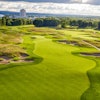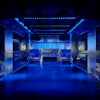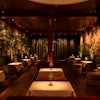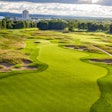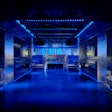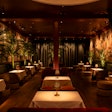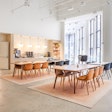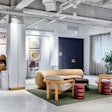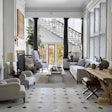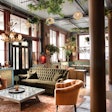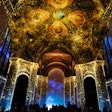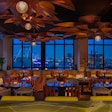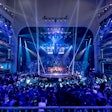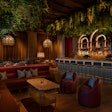Kevin Adams, who won a Tony award for his lighting design of the Broadway musical Spring Awakening this year, talked to us recently about the intersection of modern art and theater, and how that translates to his illuminations.
How did you get started in lighting design?
I never studied lighting design; I was trained in set design. After college I started lighting my own sets, and it took off. I was living in Los Angeles and going to museums and galleries and seeing work by light and space artists, and I started incorporating the techniques that those artists were using into my work, and lighting my own sets.How would you describe your lighting design philosophy?
A lot of what I do is make light sculptures out of bulbs and tubes that I find in hardware stores. It’s usually some sort of sculptural element that acts as an illuminating device or scenery in the space. I also use a lot of color. I like to make ravishingly beautiful pictures around performers, and one way I do that is using a lot of saturated color.
Where do you find your ideas?
I spent years looking at [light and space artist] Dan Flavin’s work, and a lot of things I saw Flavin do have made their way into my work. He uses saturated color, and he uses objects that make light as sculptural objects. That’s a lot of what I do. Also, movies, real life—I like looking at all the lights in Times Square. That’s thrilling. Every month there’s some huge addition to that place. I find that inspiring.
How are you using different lighting technologies?
I did use these new LED fixtures on Spring Awakening, but all that stuff is advancing quite quickly and being used in industrials and huge events. It’s actually coming the other way—just making its way to theater. I think that’s [because] they’re just very suited for, and more affordable for, events that are shorter. To rent them for a longer time is expensive. I also used a lot of compact fluorescent lightbulbs in Spring Awakening—I used blue [bulbs].
How has lighting design changed?
The biggest change is moving toward more energy-efficient lighting fixtures, like the use of LEDs and fluorescent light. It’s happening in theater, residential lighting, and in events. It’s all moving toward using less energy and putting out more light.
How do you use lighting to change the mood or feel during the show?
Through changes of color, usually. And I also go from small, isolated spaces to large, exploding spaces.
How is stage lighting different from event lighting?
Theater is all about making the performers look good, and usually, because it’s text-based, it’s about making them visible, so they can be seen when they’re speaking. Events seem to be more about space than the human figure. I think it’s easier in theater because you have a building that’s made to support what it is you want to do. The tricky thing about events is that you’re bringing [equipment] into a space that doesn’t support lighting. I don’t know how people do it.
How did you get started in lighting design?
I never studied lighting design; I was trained in set design. After college I started lighting my own sets, and it took off. I was living in Los Angeles and going to museums and galleries and seeing work by light and space artists, and I started incorporating the techniques that those artists were using into my work, and lighting my own sets.How would you describe your lighting design philosophy?
A lot of what I do is make light sculptures out of bulbs and tubes that I find in hardware stores. It’s usually some sort of sculptural element that acts as an illuminating device or scenery in the space. I also use a lot of color. I like to make ravishingly beautiful pictures around performers, and one way I do that is using a lot of saturated color.
Where do you find your ideas?
I spent years looking at [light and space artist] Dan Flavin’s work, and a lot of things I saw Flavin do have made their way into my work. He uses saturated color, and he uses objects that make light as sculptural objects. That’s a lot of what I do. Also, movies, real life—I like looking at all the lights in Times Square. That’s thrilling. Every month there’s some huge addition to that place. I find that inspiring.
How are you using different lighting technologies?
I did use these new LED fixtures on Spring Awakening, but all that stuff is advancing quite quickly and being used in industrials and huge events. It’s actually coming the other way—just making its way to theater. I think that’s [because] they’re just very suited for, and more affordable for, events that are shorter. To rent them for a longer time is expensive. I also used a lot of compact fluorescent lightbulbs in Spring Awakening—I used blue [bulbs].
How has lighting design changed?
The biggest change is moving toward more energy-efficient lighting fixtures, like the use of LEDs and fluorescent light. It’s happening in theater, residential lighting, and in events. It’s all moving toward using less energy and putting out more light.
How do you use lighting to change the mood or feel during the show?
Through changes of color, usually. And I also go from small, isolated spaces to large, exploding spaces.
How is stage lighting different from event lighting?
Theater is all about making the performers look good, and usually, because it’s text-based, it’s about making them visible, so they can be seen when they’re speaking. Events seem to be more about space than the human figure. I think it’s easier in theater because you have a building that’s made to support what it is you want to do. The tricky thing about events is that you’re bringing [equipment] into a space that doesn’t support lighting. I don’t know how people do it.
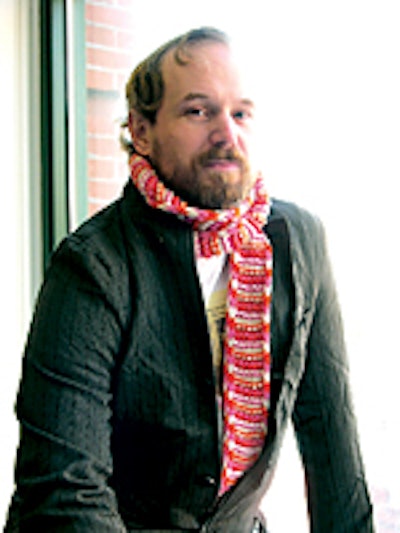
Lighting designer Kevin Adams.
Photo: Courtesy of Kevin Adams
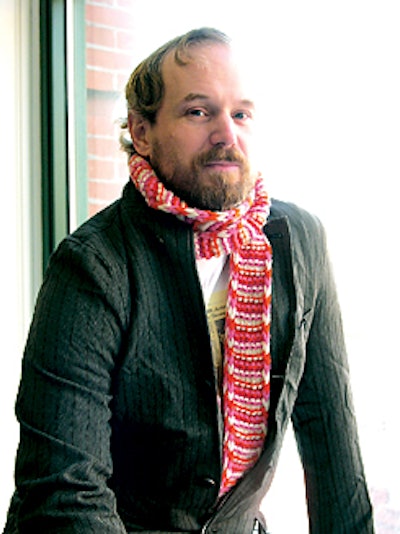
Lighting designer Kevin Adams.
Photo: Courtesy of Kevin Adams
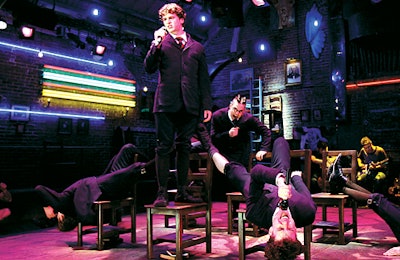
Adams noted: "The scenes mostly take place in simple white incandescent light, and I wanted the songs to explode out into the theater in layers of color provided by different shapes of fluorescent light, neon, and new LED lighting technology."
Photo: Joan Marcus
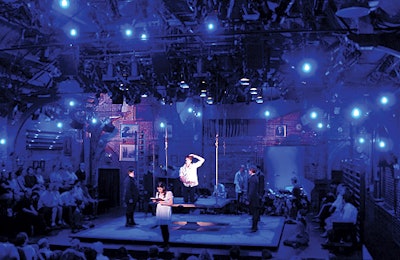
For some songs, Adams used blue compact fluorescent bulbs to turn the
Photo: Courtesy of Kevin Adams

